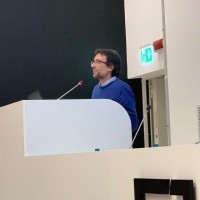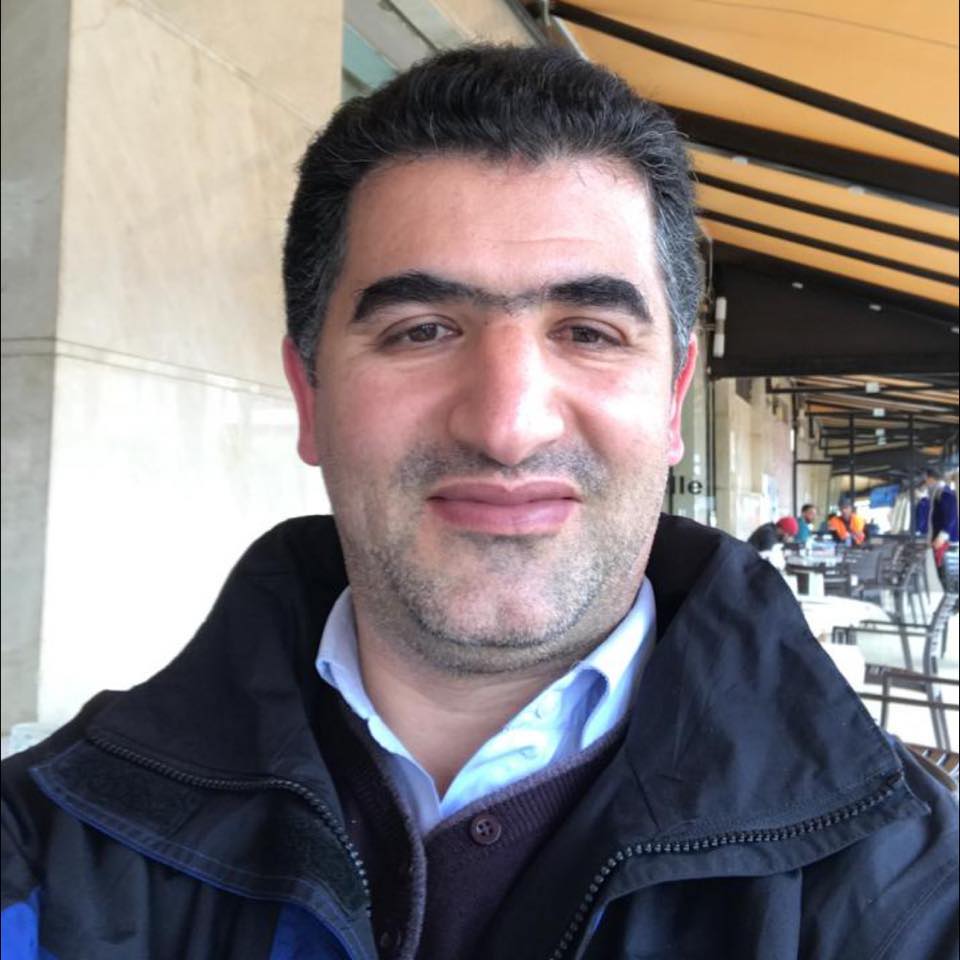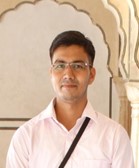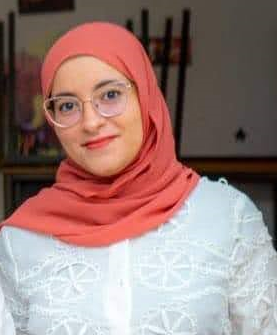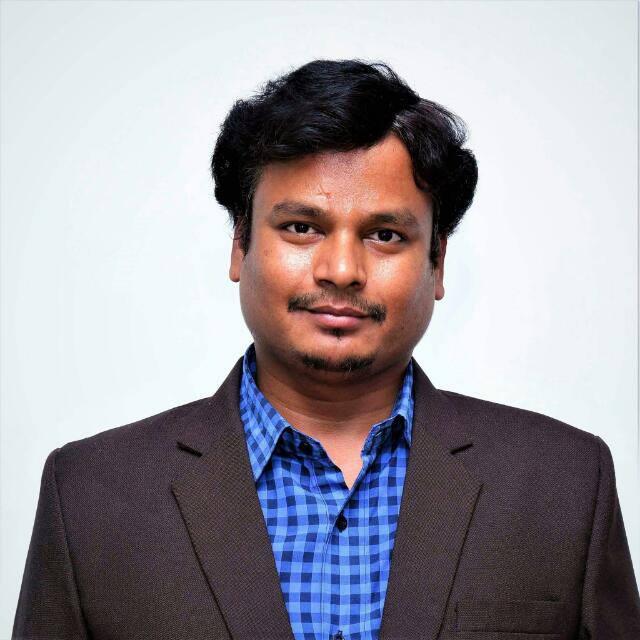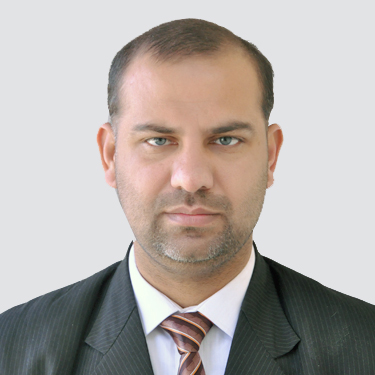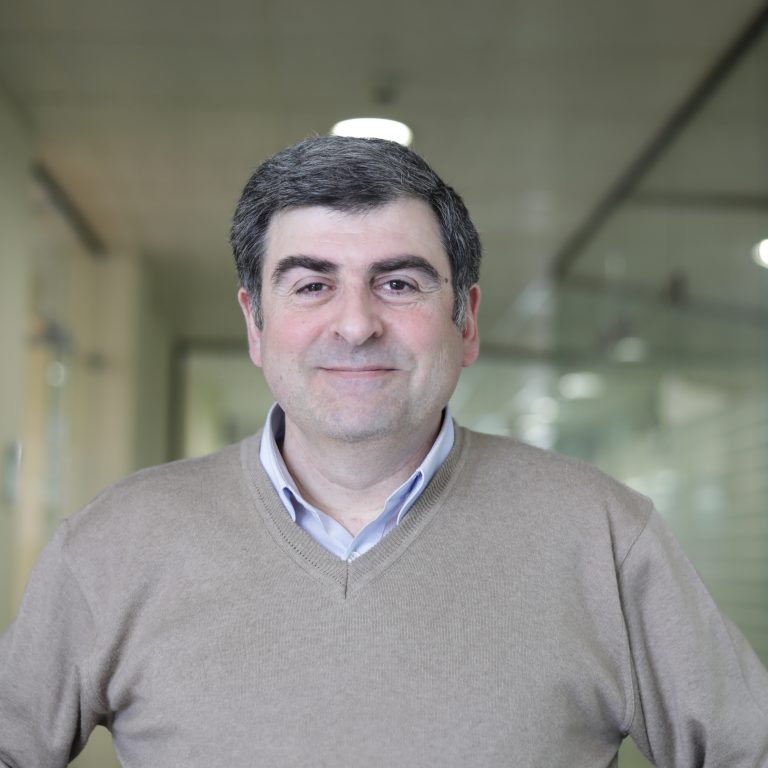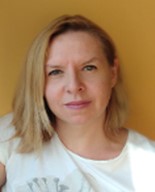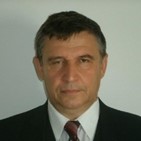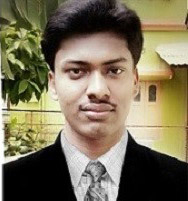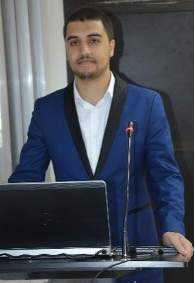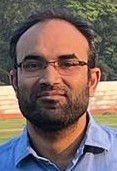Invited Speakers
Prof. Nadir Murru
Department of Mathematics, University of Trento, ItalySpeech Title: Multifactor RSA-Like Scheme Exploiting the Pell Equation
Abstract: RSA-like schemes are variants of the classical public key scheme RSA exploiting some groups defined over curves together to a parametrization. These schemes have been proposed in order to avoid some attacks to the RSA scheme (like in broadcast scenarios) and a
decryption procedure two times faster than RSA. We present an RSA-like scheme based on the group structure of the Pell conic with a parametrization which allows to exploit the Rédei functions for performing the exponentiations. Moreover, we see variants of this scheme involving modulus with more than two factors, which allow to achieve faster schemes. These variants are usually called Multifactor RSA and Multiprime RSA. The decryption procedure of our schemes appear to be faster than other RSA-like schemes based on curves, since a low number of modular inversions are involved.
Prof. Ahmed A. El-Deeb
Department of Mathematics, Faculty of Science, University of Al-Azhar, Egypt.Speech Title: Novel Fractional Dynamic Hardy-Hilbert-Type Inequalities on Time Scales with Applications
Abstract: In this talk, we will prove some new conformable fractional Hilbert-type dynamic inequalities on time scales. These inequalities extend some known dynamic inequalities on time scales, unify and extend some continuous inequalities and their corresponding discrete analogues in the literature. Our results will be proved by using some algebraic inequalities, conformable fractional H\"older inequalities, conformable fractional Jensen's inequalities on time scales.
Prof. Benmoumen Mohammed
LaMSD, Department of Mathematics, Faculty of Sciences, Mohammed the First University, Oujda, MoroccoSpeech Title: Parameter Estimation and Strong Consistency for p-Order Random Coefficient Autoregressive (RCA) process Based on Kalman Filter
Abstract: In this paper we elaborate an algorithm to estimate p-order Random Coefficient Autoregressive process (RCA(p)) parameters. This algorithm combines quasi-maximum likelihood method, the Kalman filter, and the simulated annealing method. In the aim to generalize the results found for RCA(1) (see Benmoumen and al 2013), we have integrated a sub-algorithm which calculates the theoretical autocorrelation. We also investigate the strong consistency of the quasi-maximum likelihood estimators derived through the Kalman filter for stationary random coefficient autoregressive (RCA) process (Benmoumen and Salhi 2021). Simulation results demonstrate that the algorithm is viable and promising.
Dr. Sihem MAHOUI
University of Science and Technology Houari Boumediene in Algiers, Faculty of Mathematics, Department of Analysis, AlgeriaSpeech Title: Optimal Control of Problems with Missing Data and Applications
Abstract: Real life problems in general contains missing data, like for example in pollution, economy, agronomy or also pandemics, etc… To get the optimal control for this kind of problems, modelled by PDE’s, we use the notion of no-regret control introduced by J.-L. Lions where we characterise it by a singular optimality system.
Dr. Shikhar Tyagi
Department of Data Science and Statistics, Christ Deemed to be University, Bangalore, IndiaSpeech Title: Weighted Lindley Multiplicative Regression Frailty Models under Random Censored Data
Abstract: The emphasis of conventional survival research methods has historically been on the occurrence of failures over time. The lack of knowledge of related observed and unobserved covariates during the study of such events can have negative consequences. Frailty models are a viable option for investigating the impact of unobserved covariates in this context. In this article, we suppose that frailty multiplies the hazard rate. As a useful method to ensure the effect of unobserved heterogeneity, we propose weighted Lindley (WL) frailty models with generalized Weibull (GW) and generalized log-logistic-II (GLL2) as the baseline distributions. The Bayesian paradigm of Markov Chain Monte Carlo (MCMC) methodology is used to estimate the model parameters. Subsequently, model comparisons are performed via Bayesian comparison techniques. The popular kidney data set is considered to illustrate the results. It is shown that the new models perform better than those based on gamma and inverse Gaussian frailty distributions.
Dr. Hasna NJAH
Higher Institute of Computer Sciences and Multimedia of Gabes, University of Gabes, TunisiaSpeech Title: Merits of Bayesian Networks in Overcoming the Curse of Dimensionality
Abstract: The abundant availability of data in Big Data era has helped achieving significant advances in the machine learning field. However, many high-dimensional datasets appear with incompleteness from different perspectives such as values, labels, annotations and records. Consequently, many machine learning methods struggle in providing reliable predictive and descriptive models. The implemented algorithms often struggle with learning a generalized model. The curse of dimensionality concept encompasses these challenges. Bayesian networks offer a promising remedy to these challenges as they rely on a strong graphical and probabilistic foundation. Their learning algorithms are robust against the noisy and incomplete data. Their underlying models are therefore capable of ensuring generalization even when learnt from high-dimensional datasets having small volumes. In this talk, these challenges will be discussed and the Bayesian network foundations will be explained. Additionally, the emphasis is put on the merits of Bayesian networks in overcoming the curse of dimensionality.
Prof. Srinivasarao Thota
Department of Mathematics, School of Sciences, SR University, IndiaSpeech Title: A Seventh Order Iterative Algorithm to Find a Root of Transcendental Equations
Abstract: Applications of various fields of pure and applied sciences and technology, engineering arise in the form non-linear equations f (x) = 0; and many engineers and researchers have been discussed and created several hybrid algorithms to solve nonlinear equations numerically using the well-known classical root finding algorithms.
In this talk, we discuss a seventh order iterative method/algorithm for solving the given transcendental equation. The main idea of the proposed algorithm id based on the modified homotopy perturbation technique. Analysis of converges of the proposed algorithm is also present. An example is discussed to validate and illustrate the proposed algorithm and MS Excel Implementation is presented with sample computations. Using MS Excel spreadsheet, one can makes numerical methods easier to calculate the manual calculations.
Dr. Liang Zhang
College of Sciences, Northwest A&F University, ChinaSpeech Title: Dynamics of a Stochastic Heroin Epidemic Model
Abstract: In this talk, we investigate a stochastic heroin epidemic model. By constructing suitable stochastic Lyapunov functions, we establish sufficient conditions for the extinction of the drug users. Moreover, we also establish sufficient conditions for the existence of ergodic stationary distribution to the model, which reveals that the drug users will persist. The sensitivity analysis indicates that prevention would be more important than cure.
Dr. Talat Nazir
Department of Mathematical Sciences, Universiy of South Africa, Florida Campus, South AfricaSpeech Title: Iterated Function System of Generalized Hutchinson Operators for Global Fractals
Abstract: Iterated function systems are based on the mathematical foundations laid by Hutchin-son [1]. He showed that Hutchinson operator constructed with the help of a Önite system of contraction mappings deÖned on a Euclidean space Rn has closed and bounded subset of Rn as its Öxed point, called attractor of iterated function system (see also in [2] ). In this context, Öxed point theory plays signiÖcant and vital role to help in the construction of fractals.
The aim of this talk is to present the su¢ cient conditions for the existence of attractor of a generalized iterated function system composed of a complete metric space and a Önite family of generalized contractive mappings. Some examples are presented for construction of global fractals to support our main results presented therein. The results obtained in the presentation extend and generalize various well known results in the existing literature [3, 4].
References
[1] J. Hutchinson, Fractals and self-similarity, Indiana Univ. J. Math., 1981, 30 (5), 713-747.
[2] M. F. Barnsley, Fractals Everywhere, 2nd ed., Academic Press, San Diego, CA (1993).
[3] T. Nazir, M. Khumalo, V. Makhoshi, Iterated function system of generalized contractions in partial metric spaces, FILOMAT, 35:15 (2021), 201-220.
[4] M. Khumalo, T. Nazir and V. Makhoshi, Generalized iterated function system for common attractors in partial metric spaces, AIMS Mathematics, 7 (7)
(2022), 13074-13103.
Prof. Vahagn H. Mikaelian
Department of Informatics, Yerevan State University, ArmeniaSpeech Title: Varieties Generated by p-groups and Kp-series
Abstract: For a prime p let A be a nilpotent p-group of finite exponent and B be an abelian p-group of finite
exponent. Then the wreath product A Wr B generates the product variety var(A) var(B) if and only if the group B contains a the direct product of countably many copies of the cycle Cn where n is the exponent of B. This result continues our previous study of cases when var(A Wr B) = var(A) var(B) holds for certain other classes of groups A and B, such as, abelian groups, finite groups, etc.
Assoc. Prof. Miroslava Antić
Faculty of Mathematics, University of Belgrade, SerbiaSpeech Title: A special Construction of Lagrangian Submanifolds in a Flat Complex Space
Abstract: Lagrangian submanifolds play an important role in classical mechanics and mathematical physics in particular in supersymmetric field theories and in string theory. Hence their structure and particular types of examples are subject of great interest.
The procedure of constructing a Lagrangian immersion in the complex projective space, starting with two other Lagrangian immersions into complex projective spaces of lesser dimension is known as a Calabi product, motivated by the similar construction in the affine differential geometry. In particular, one may consider a point instead of the one of the immersions, and in both cases the submanifold has a warped product structure of the interval and one or two Lagrangian immersions. Such Lagrangian submanifold then admits a splitting of the tangent bundle into orthogonal subbundles defined in terms of the corresponding second fundamental form, in case of a point and an immersion decomposition consists of two components and in case of a proper Calabi product, decomposition has three components. The generalization of this notion was investigated for Lagrangian immersions in non-flat complex space forms. Here we study the flat case and investigate the properties of the Lagrangian immersions with tangent bundle admitting the decomposition in question and we give explicit expressions for such immersions.
Prof. Dr. Viacheslav Kalashnikov
Department of Systems and Industrial Engineering, Tecnológico de Monterrey, MexicoSpeech Title: Extensions of Antipodal-Type Theorems
Abstract: The central problems of this talk are extensions of certain antipodal and fixed-point theorems to the cases of non-convex sets (star-shaped sets, to be more exact). The techniques used in the fixed-point theorems are widely used in Operations Research, Mathematical Programming, Theory of Games and in many other areas of Optimization Theory and its Applications. These techniques are appropriate when establishing the existence of solutions in the problems of Mathematical Programming, Convex Games, mathematical programs with equilibrium constraints (MPEC), naming only few of the areas of applications. Because of that, any extensions of the classical theorems of fixed points (like the theorem by Brouwer for the single-valued functions and the theorem by Kakutani for multi-valued functions) are very interesting, important and enjoy numerous applications.
The Fixed-Point Theorem by Brouwer and the Theorem by Borsuk-Ulam have been characterized as two powerful topological tools of a very similar structure. In the books of topology such as Krasnosel’sky (1964), Herings (1996), Yang (1999) these two theorems are listed as well as the relationships between them (in fact, the Theorem by Borsuk-Ulam implies the Fixed-Point theorem by Brouwer). The majority of the fixed-point theorems deal with the results for the functions defined over the convex sets. However, in many applied problems, the domains of the involved functions are not necessarily convex; for example, the feasible sets in bilevel programming lack this property even in linear bilevel programming problems (cf., Dempe, S. (2002).
This work presents various extensions for the Borsuk-Ulam antipodal theorem and the Browder theorem to the case when the domains of the involved applications are in the star-shaped sets (that is, are not convex) and the structures of the mappings are multi-valued. Even more, this work contains the explicit description of an algorithm of construction of the zero-path, and in this way it extends the Browder theorem.
Dr. Suman Maity
Mathematics Department, Raja N.L. Khan Women’s College (Autonomous), IndiaSpeech Title: A Study of An EOQ Model with Public-Screened Discounted Items under Cloudy Fuzzy Demand Rate
Abstract: This article deals with an economic order quantity inventory model of imperfect items under non-random uncertain demand. Here we consider the customers screen the imperfect items during the selling period. After a certain period of time, the imperfect items are sold at a discounted price. We split the model into three cases, assuming that the demand rate increases, decreases, and is constant in the discount period. Firstly, we solve the crisp model, and then the model is converted into a fuzzy environment. Here we consider the dense fuzzy, parabolic fuzzy, degree of fuzziness and cloudy fuzzy for a comparative study. The basic novelty of this paper is that a computer-based algorithm and flow chart have been given for the solution of the proposed model. Finally, sensitivity analysis and graphical illustration have been given to check the validity of the model.
Dr. Salah-Eddine Chorfi
Faculty of Sciences Semlalia, Cadi Ayyad University, MoroccoSpeech Title: Penalized HUM Approach for the Numerical Approximation of Null Controls for Heat Equation with Dynamic Boundary Conditions
Abstract: In this talk, we study the null controllability of heat equation with dynamic boundary conditions for both distributed and boundary control problems. We investigate the numerical approximation of null controls for such systems via the Hilbert Uniqueness Method (HUM). The theoretical results are validated by considering both one- and two-dimensional numerical experiments. The numerical tests show the efficiency of the designed HUM algorithm for computing both internal and boundary controls.
Dr. Prem Kumar Singh
Department of Computer Science and Engineering, Gandhi Institute of Technology and Management, IndiaSpeech Title: Fourth Dimensional Quantum Data Representation Using Turiyam Set
Abstract: Recently “Turiyam set” is introduced at Int'l Conference on Operations Research and Applications (ORA 2021) which held at Guilin, China. In this talk the author focused on dealing the uncertainty in data in data and its representation beyond the Acceptation, rejection and indeterminant parts. One of the examples is USA-China conflict is beyond the win, draw or loss of any event. It is totally based on consicious of USa (or China) to get profit (or loss) each other and vice versa. This fourth dimensional awareness is Turiyam. In similar way Indian-Pakistan match is beyond the Win, Draw or Loss of a match. It is totally focused on removal of Pakistan or India from the given series. Hence India (or Pakistan) may lose some match from lower team also just to remove India (or Pakistan). This type of matches results already known as fourth dimensions of human cognition. It is based on non-dualism concept of Sanskrit or Taoism Yin-Yang theory of China. Another suitable example is COVID data set representation contains fourth dimensions uncertainty for the analysis. The people who got recovered can be considered as true regions (t), people who died due to COVID19 can be considered as false regions (f), people who are still active can be considered as indeterminacy (i), people who got vaccinated can be considered as Turiya or Liberated state (l). The refusal degree means people who still did not come under these regions can be represented as 1-(t+i+f+l). However the exploration of Turiyam dimensions is not easy. It is much complex than Space Time Tradeoffs as we deal some time unknown data. Recently, Turiyam modules, Turiyam matrix and its vector is introduced for dealing the quantum data. This talk will focus on providing a brief about Turiyam dimension and its data representation for further discussions and development.
Dr. Asifa Tassaddiq
Department of Basic Sciences and Humanities, College of Computer and Information Sciences Majmaah University, Saudi ArabiaSpeech Title: Fractional Distributional Representation of Gamma Function
Abstract: Inspired by the new investigations about fractional derivatives of Dirac delta function, the author uses a fractional Taylor series to obtain a distributional representation of gamma function in terms of its fractional derivatives. The convergence of this new representation is discussed in the sense of distributions. Laplace transform of new representation is obtained which led to several new results. A new fractional kinetic equation is formulated and solved. Classical as well as the distributional solution of the formulated problem is obtained.
More details will be updated...

